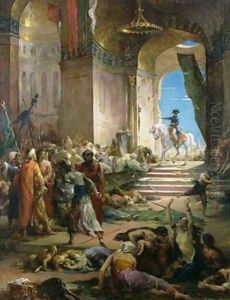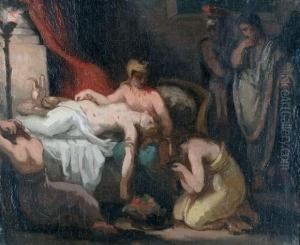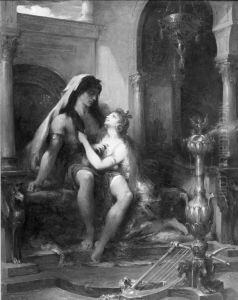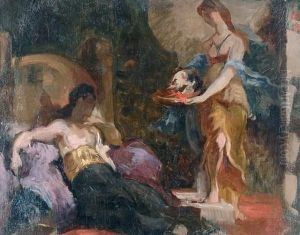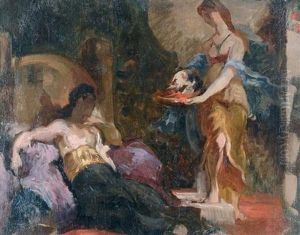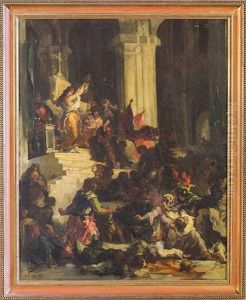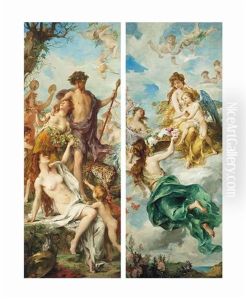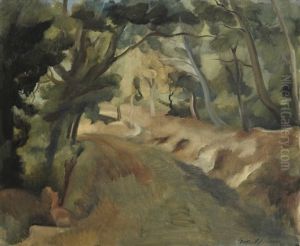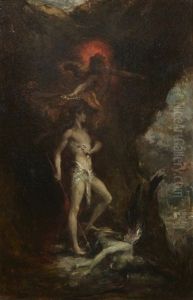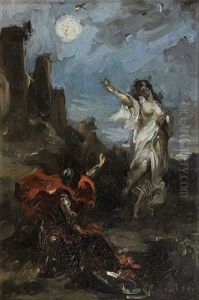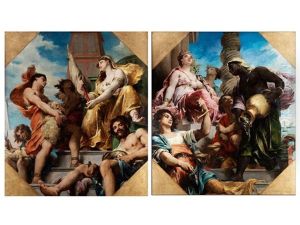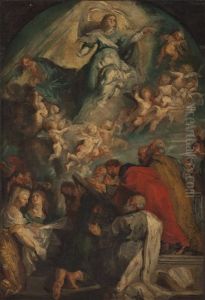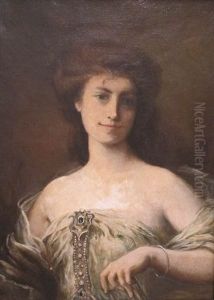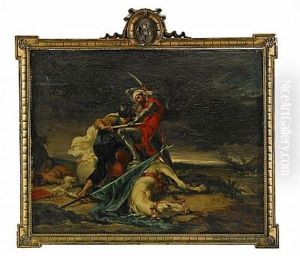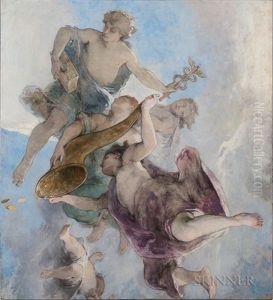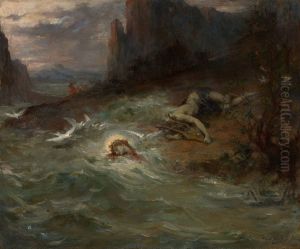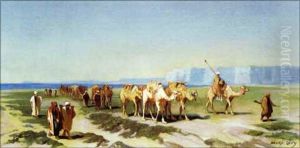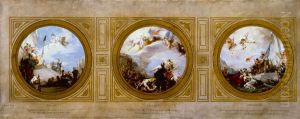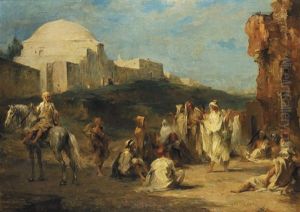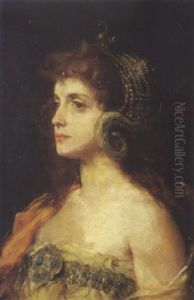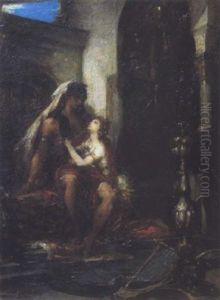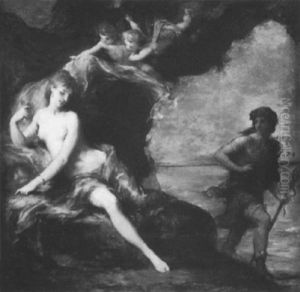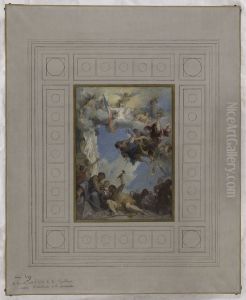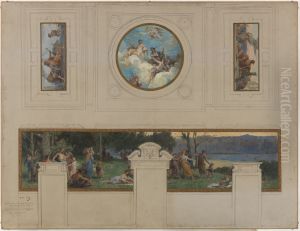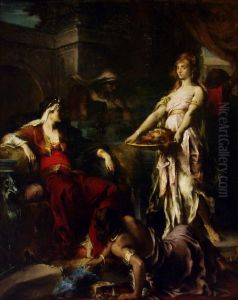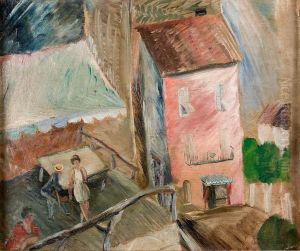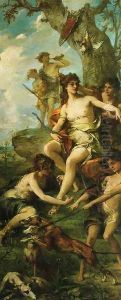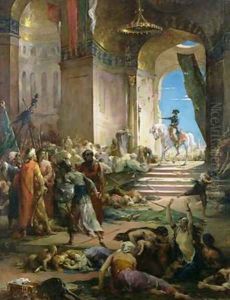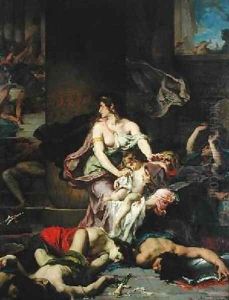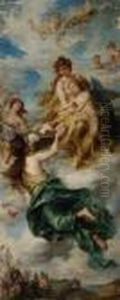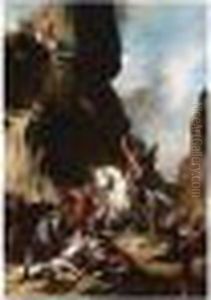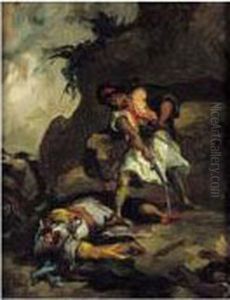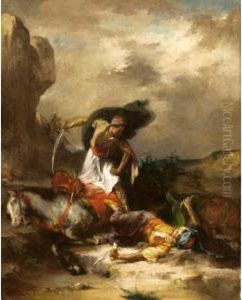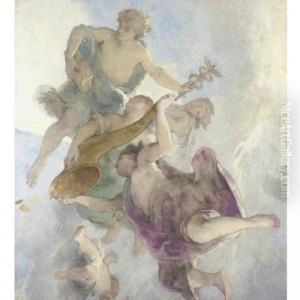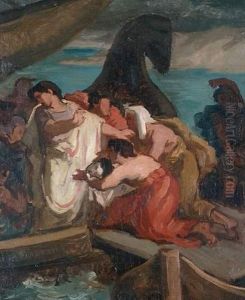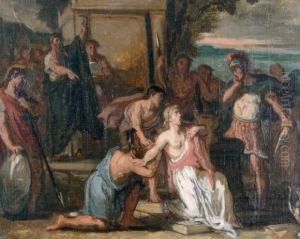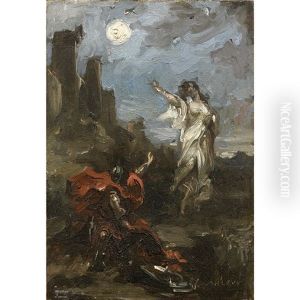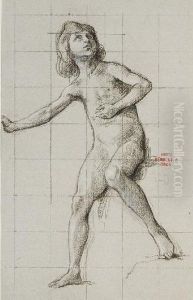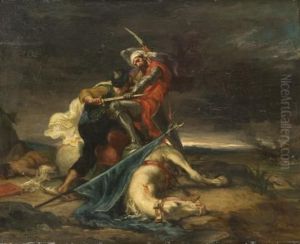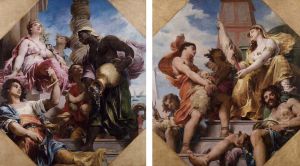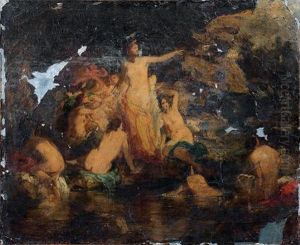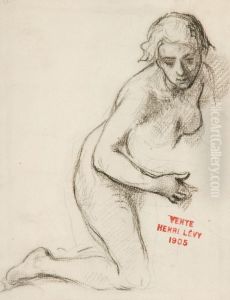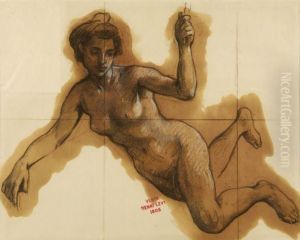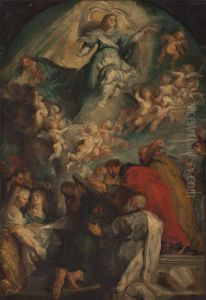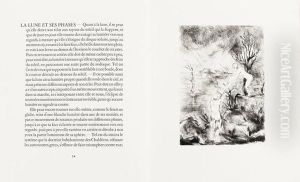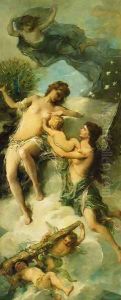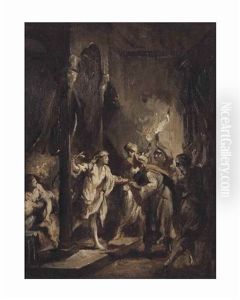Henri Leopold Levy Paintings
Henri Léopold Lévy was a French painter born on January 29, 1840, in Nancy, France. He grew up in a period that witnessed the emergence of the Second French Empire under Napoleon III and the broad currents of Romanticism and Realism in art. Lévy studied under Eugène Delacroix, one of the foremost Romantic painters, which greatly influenced his early work. He was also a student of François-Édouard Picot, a painter known for his neoclassical style.
Lévy's work is characterized by a blend of the academic traditions he learned from his teachers and the influences of the more modern styles of his time. He participated in the Paris Salon, an annual art exhibition in France that was the official art exhibition of the Académie des Beaux-Arts, earning recognition and medals for his submissions. His subjects often included themes from mythology, religion, and history, which were popular among academic artists of the era.
Throughout his career, Lévy developed a reputation for his mastery of technique and composition. His painting 'La Sorcière' (The Witch) is particularly noted for its dramatic intensity and the realistic portrayal of its subject matter. He also produced portraits, landscapes, and genre scenes, displaying a versatility that was well-regarded by his contemporaries.
The influence of Impressionism, which began to take hold during his lifetime, did not significantly impact Lévy's style. He remained committed to the academic principles of his education, even as the art world around him underwent significant changes. Despite this, his work was appreciated for its technical proficiency and the emotional depth he brought to traditional subjects.
Henri Léopold Lévy's contributions to French art were part of the broader 19th-century European art movement, bridging the gap between the neoclassical and Romantic styles of the early part of the century and the more modern developments that followed. He passed away on November 14, 1904, in Paris, leaving behind a body of work that continues to be studied for its embodiment of the academic art tradition in a time of transition.
